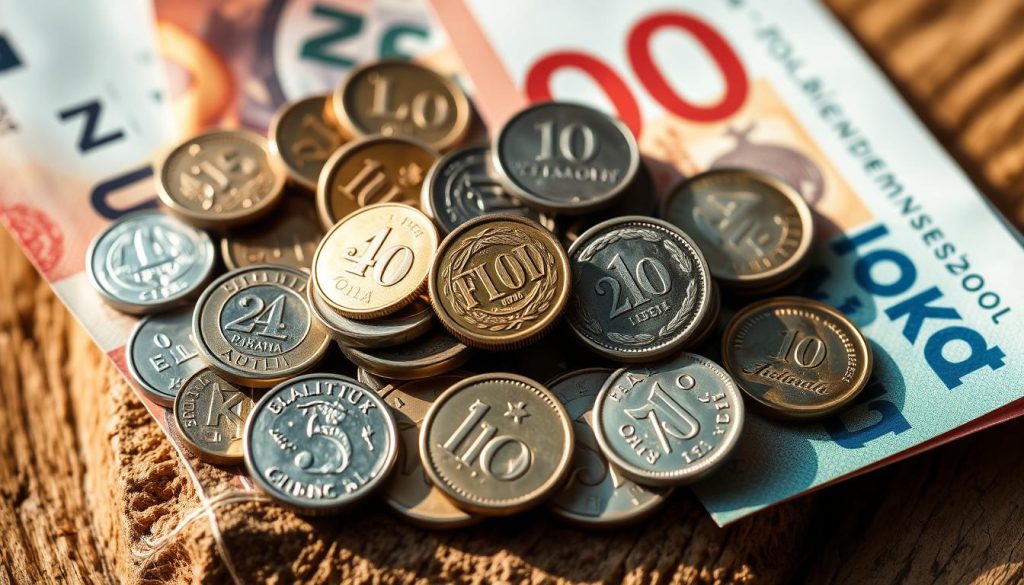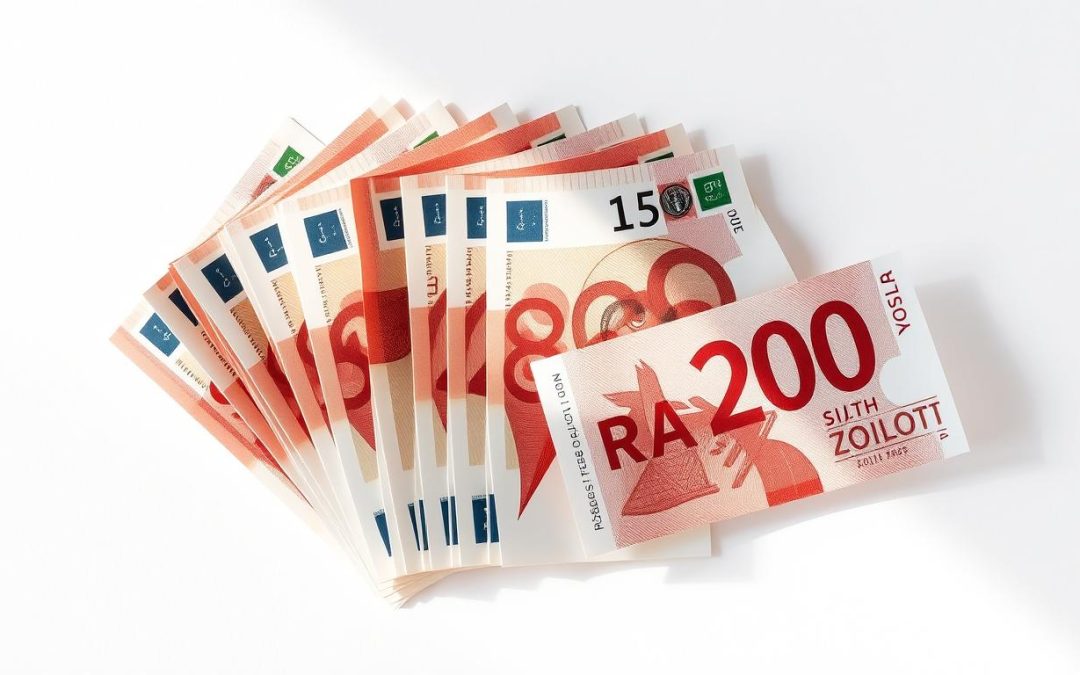Have you ever wondered how to manage your money efficiently while exploring a new country? Understanding the local currency system is a crucial part of any trip, and Poland is no exception. This guide will help you navigate the ins and outs of handling cash, exchanging currency, and using payment options during your stay.
Poland uses its own official currency, the Złoty (PLN), which has been in circulation for centuries. Whether you’re planning a short city break or a longer adventure, knowing how to handle your money wisely can make your journey smoother. From everyday cash uses to smart strategies for currency conversion, this guide covers everything you need to know.
Being well-prepared ensures you can focus on enjoying your trip without worrying about financial hiccups. Let’s dive into the essentials of managing currencies and payments in Poland, so you can travel with confidence.
Key Takeaways
- Poland’s official currency is the Złoty (PLN).
- Cash is widely used, especially in smaller towns.
- Credit and debit cards are accepted in most urban areas.
- Exchange currency at banks or authorized exchange offices for better rates.
- Always carry some cash for smaller purchases and transportation.
Introduction to the Polish Złoty
The Polish Złoty is the heart of all financial transactions in the country. As the official currency, abbreviated as PLN, it has been in use since 1995. Despite Poland’s membership in the European Union, the Złoty remains the exclusive legal tender, ensuring fiscal independence.
The Złoty is divided into 100 groszy, with coins ranging from 1 grosz to 5 złoty. Banknotes come in denominations of 10, 20, 50, 100, 200, and 500 złoty. This system makes it easy to handle everyday transactions, whether you’re buying a coffee or paying for transportation.
What is the Polish Złoty?
The Złoty, symbolized as “zł,” is the backbone of Poland’s economy. It replaced the old Złoty in 1995 after a redenomination process. Today, it’s widely accepted across the country, from bustling cities to quiet villages. Even though Poland is part of the EU, the Złoty continues to dominate daily transactions.
“The Złoty’s stability is a testament to Poland’s strong economic policies.”
The Role of the National Bank of Poland
The National Bank of Poland plays a crucial role in maintaining the Złoty’s stability. It oversees currency issuance and ensures inflation remains under control. For travelers, this means reliable exchange rates and confidence in the currency’s value.
Understanding these basics will help you manage your money efficiently during your trip. Whether you’re exchanging currency or making purchases, the Złoty is your key to a hassle-free experience.
Understanding Polish Coins and Banknotes
Navigating the coins and banknotes of a new country can be both exciting and practical. In Poland, the currency system is straightforward yet rich in history and design. Let’s explore the details of the coins and banknotes you’ll encounter during your trip.

Exploring Coins: Groszy and Złoty Denominations
The Polish złoty is divided into 100 groszy, which are used for smaller transactions. Coins come in denominations of 1, 2, 5, 10, 20, and 50 groszy. For amounts of 1 złoty and above, you’ll find coins in 1, 2, and 5 złoty. This system makes it easy to handle everyday purchases, from bus tickets to snacks.
Designs and Security Features on Currency
Polish banknotes are not just functional—they’re works of art. Available in denominations of 10, 20, 50, 100, 200, and 500 złoty, each note features historical figures and national symbols. For example, the 20 złoty note showcases King Bolesław I the Brave, while the 100 złoty note highlights King Władysław II Jagiełło.
Security features are also a key aspect of these banknotes. Look for watermarks, holographic strips, and raised print to ensure authenticity. Recognizing these features can help you avoid counterfeit notes and handle your money confidently.
| Denomination | Historical Figure | Security Features |
|---|---|---|
| 10 złoty | Mieszko I | Watermark, holographic strip |
| 20 złoty | Bolesław I the Brave | Raised print, microprinting |
| 50 złoty | Casimir III the Great | Holographic strip, UV elements |
| 100 złoty | Władysław II Jagiełło | Watermark, color-shifting ink |
| 200 złoty | Sigismund I the Old | Holographic strip, raised print |
| 500 złoty | John III Sobieski | UV elements, microprinting |
Understanding the Polish złoty system ensures you’re prepared for any transaction. Whether you’re using coins for small purchases or handling larger banknotes, this knowledge will make your trip smoother and more enjoyable.
Practical Uses of Currency on Your Trip
Understanding how to use local currency in everyday situations is key to a smooth journey. From buying snacks at a shop to dining at a restaurant, handling cash effectively ensures you’re always prepared.
Everyday Transactions and Small Purchases
In many places, cash remains the preferred payment method. Small vendors, local markets, and public transportation often require physical money. Carrying smaller denominations like 10 or 20 złoty notes can make these transactions easier.
For example, when buying a coffee or a bus ticket, having exact change saves time. It’s also helpful to keep some groszy coins for vending machines or parking meters.
Handling Cash and Change Effectively
When paying with cash, always check your change. This is especially important in busy areas where mistakes can happen. Keep your money organized in a wallet or pouch to avoid fumbling during transactions.
If you’re unsure about the amount, don’t hesitate to ask. Most locals are happy to help, and it’s a great way to practice your language skills.
Tipping Customs
Tipping is a common practice, especially in restaurants and taxis. A tip of 10-15% is standard for good service. Some places may add a service charge for larger groups, so check your bill first.
For smaller services, like a coffee or a quick snack, rounding up the bill is a polite gesture. This shows appreciation without overcomplicating the transaction.
| Service | Suggested Tip |
|---|---|
| Restaurant | 10-15% of the bill |
| Taxi | Round up to the nearest złoty |
| Coffee Shop | 1-2 złoty |
By mastering these practical uses of currency, you’ll navigate your trip with confidence. Whether you’re shopping, dining, or tipping, these tips ensure you’re always prepared.
Currency Exchange Tips for Traveling to Poland
Getting the best exchange rate can save you money and make your trip more enjoyable. Knowing where and how to exchange your currency ensures you avoid unnecessary fees and get the most value for your money. Here’s a guide to help you navigate the process smoothly.

Finding the Best Exchange Rates
Start by researching the mid-market rate, which is the real exchange rate without added fees. This rate is often used by banks and financial institutions. Avoid exchanging money at airports or hotels, as they typically charge higher fees and offer less favorable rates.
Instead, look for authorized exchange offices or banks in city centers. Online platforms can also provide competitive rates and convenience. Always compare rates before making a decision to ensure you’re getting the best deal.
Avoiding High Fees and Airport Pitfalls
Airports are convenient but often come with hidden fees and poor rates. If you must exchange money there, do so in small amounts and find a better location later. Be cautious of dynamic currency conversion, where merchants offer to charge you in your home currency. This service usually includes high fees.
Use reliable exchange providers to avoid scams. Check reviews and ask locals for recommendations. Carrying a mix of cash and cards ensures you’re prepared for any situation without overpaying for conversions.
| Exchange Method | Pros | Cons |
|---|---|---|
| Banks | Secure, reliable rates | May have higher fees |
| Exchange Offices | Competitive rates, convenient | Varies by location |
| Online Platforms | Best rates, easy to use | Requires internet access |
| Airports | Convenient | High fees, poor rates |
By following these tips, you can make informed decisions about currency exchange and save money for your travels. Whether you’re exchanging cash or using cards, being prepared ensures a stress-free experience.
Managing Your Money with Polish Payment Options
When traveling, knowing your payment options can make all the difference. In Poland, you’ll find a mix of modern and traditional methods to handle your money. Whether you prefer using cards or carrying cash, understanding these options ensures smooth transactions throughout your trip.
Using Debit and Credit Cards in Major Cities
In urban areas, cards are widely accepted. Most restaurants, shops, and hotels will take Visa, Mastercard, and American Express. Travel debit cards, like those from Wise, are particularly useful. They offer low fees and support over 40 currencies, making them a smart choice for international travelers.
However, always check for foreign transaction fees with your bank. Some cards, like the Chase Sapphire Preferred, charge up to 5% for cash advances. Using a card for purchases is often more cost-effective than withdrawing cash from an ATM.
Carrying PLN Cash as a Reliable Backup
While cards are convenient, carrying some Polish złoty (PLN) is essential. Smaller towns, local markets, and public transportation often require cash. ATMs are available 24/7, but withdrawing larger amounts less frequently can help you avoid repeated fees.
For the best rates, avoid exchanging money at airports or hotels. Instead, use authorized exchange offices or banks. This ensures you get the most value for your money without unnecessary charges.
“A mix of cash and cards ensures you’re prepared for any situation.”
By balancing your payment methods, you can enjoy a hassle-free trip. Whether you’re shopping in a bustling city or exploring a quiet village, these tips will help you manage your money with confidence.
Poland: Ultimate Travelers Guide to Currencies & Payments
Making informed choices about currency can enhance your trip significantly. Whether you’re exploring bustling cities or quiet towns, knowing how to convert your money efficiently ensures you save time and avoid unnecessary fees. Here’s how you can make the most of every transaction.

Trusted Exchange Providers and Tips to Save
Start by researching reliable exchange providers. Banks and authorized kantors often offer better rates than airports or hotels. For example, Profee provides competitive rates for Polish złoty and supports transfers to over 60 destinations. Always compare rates before exchanging money to ensure you’re getting the best deal.
Here are some trusted tips to save money:
- Use online platforms for real-time exchange rates.
- Avoid dynamic currency conversion, which often includes hidden fees.
- Keep a record of exchange notes and receipts to track your spending.
Best Practices in Major Cities
In larger cities, you’ll find more options for currency exchange. Look for ATMs in well-lit, populated areas to avoid fraud. Many ATMs offer fee-free withdrawals, but always check your bank’s foreign transaction fees. Using a travel debit card, like Wise, can also help you save on fees and access multiple currencies.
“Small savings on each transaction can add up to significant amounts over the course of your trip.”
By following these strategies, you can optimize your currency conversion and focus on enjoying your journey. Whether you’re shopping, dining, or exploring, these tips ensure you’re always prepared.
Leveraging Travel Debit Cards for Easy Transactions
Travel debit cards are a game-changer for managing your money abroad. They offer a secure and efficient way to handle expenses without the hassle of carrying large amounts of cash. Whether you’re shopping, dining, or exploring, these cards provide flexibility and peace of mind.
Benefits of Multi-Currency Cards like Wise
Multi-currency cards, such as those offered by Wise, are a smart option for travelers. They allow you to hold and convert multiple currencies seamlessly, often at competitive prices. This means you can pay in the local currency without worrying about hidden fees or poor exchange rates.
These cards are also highly secure. With features like instant transaction notifications and the ability to freeze your card if lost, you can travel with confidence. Plus, they’re widely accepted, making them a reliable choice for both urban and rural areas.
Setting Up and Using Your Travel Card
Setting up a travel debit card is straightforward. Most providers, like Wise, offer an easy online application process. Once approved, you can load your card with your preferred currency and start using it immediately.
To get the most out of your card, monitor your spending through the provider’s app. This helps you stay within budget and track exchange rates in real time. Having a digital backup option alongside your physical cash ensures you’re always prepared for any situation.
“A travel debit card simplifies your financial management, letting you focus on enjoying your trip.”
By leveraging travel debit cards, you can streamline your transactions and save money on fees. Whether you’re in a bustling city or a quiet town, this option ensures you’re always ready to handle your expenses with ease.
Managing Currency Conversion Rates On the Go
Smartphone apps make it easy to monitor live currency rates wherever you go. Whether you’re exploring a bustling city or a quiet place, staying updated ensures you get the best value for your money. With real-time data at your fingertips, you can make informed decisions and avoid unnecessary fees.

Using Smartphone Apps for Live Exchange Rates
Apps like Wise and XE provide real-time exchange rate updates, helping you track fluctuations instantly. These tools often include features like rate alerts, historical data, and multi-currency support. For example, you can set notifications to alert you when rates hit a specific threshold, ensuring you exchange at the optimal time.
Using these apps is especially helpful when traveling to different places. They allow you to compare rates from various providers, so you always get the best deal. Plus, they’re user-friendly, making them accessible even for first-time travelers.
Staying Informed About Market Fluctuations
Global market trends can significantly impact currency values. Factors like inflation, interest rates, and political stability play a role in these changes. By staying informed, you can anticipate shifts and plan your exchanges accordingly.
For instance, if you’re near an airport, rates might differ due to higher fees. Checking your app before exchanging money can save you from overpaying. Additionally, understanding these trends helps you make smarter financial decisions throughout your trip.
“Staying updated on exchange rates ensures you’re always in control of your travel budget.”
Here are some actionable tips to make tracking rates easy:
- Download a reliable app like Wise or XE before your trip.
- Set rate alerts to notify you of favorable changes.
- Compare rates in different places, especially near airports.
- Monitor global news for factors that might affect currency values.
By leveraging these tools and strategies, you can manage your money efficiently and focus on enjoying your journey. Whether you’re shopping, dining, or exploring, staying informed ensures you’re always prepared.
Safety and Best Practices for Handling Your Money in Poland
Keeping your money safe while traveling is essential for a stress-free experience. Whether you’re exploring bustling cities or quiet towns, taking a few precautions can protect your funds and give you peace of mind. Here’s how to manage your money securely during your trip.
Secure Methods for Cash and Card Management
When handling cash, always be discreet. Avoid displaying large sums in public and keep your money in a secure place. Using a money belt or a hidden pouch can help prevent theft. For added security, store extra cash in your hotel safe.
For card payments, use credit or debit cards with chip-and-pin technology. This reduces the risk of fraud. Always shield your PIN when entering it and monitor your transactions regularly. If your card is lost or stolen, report it immediately to your bank.
Best Practices for Secure Storage
At home, keep a record of your card details and emergency contact numbers in a safe place. While traveling, carry only the cards you need and leave backups at your hotel. This minimizes the risk of losing all your payment options at once.
For added protection, consider using RFID-blocking wallets. These prevent skimming devices from accessing your card information. This small investment can save you from potential financial losses.
“Taking these precautions ensures your money holds its value and lets you focus on enjoying your trip.”
Practical Tips for Every Traveler
Here are some actionable tips to keep your money safe:
- Use hotel safes for storing passports, extra cash, and valuables.
- Carry only the cash you need for the day and keep the rest secure.
- Avoid exchanging money at airports due to poor rates and high fees.
- Notify your bank of your travel plans to prevent card blocks.
| Safety Measure | Benefit |
|---|---|
| Money Belt | Prevents theft by keeping cash hidden |
| Hotel Safe | Secures valuables when not in use |
| RFID Wallet | Protects against card skimming |
| Card Monitoring | Detects unauthorized transactions early |
By following these best practices, you can handle your money with confidence. Whether you’re shopping, dining, or exploring, these tips ensure you’re always prepared and protected.
Conclusion
Exploring a new country is exciting, but managing your money wisely makes it even better. This guide has covered essential tips for handling currency, using payment methods, and staying secure during your travels. By planning ahead and combining cash and cards, you can optimize your spending and avoid unnecessary fees.
Remember to use trusted exchange providers, monitor rates with apps, and keep your money safe. These strategies ensure you’re prepared for any situation, whether you’re in bustling Warsaw or a quiet village. With proper preparation, every tourist can enjoy a smooth and cost-effective trip.
Ready to explore more? Check out additional guides and tips to make the most of your time in this vibrant country. Happy travels!
The above is subject to change.
Check back often to TRAVEL.COM for the latest travel tips and deals.
Here are some Tours & Sightseeing suggestions that might pique your interests!
